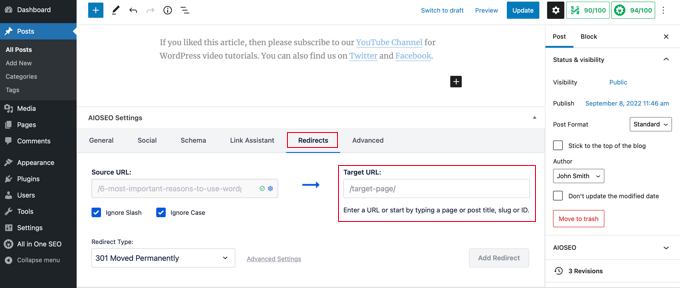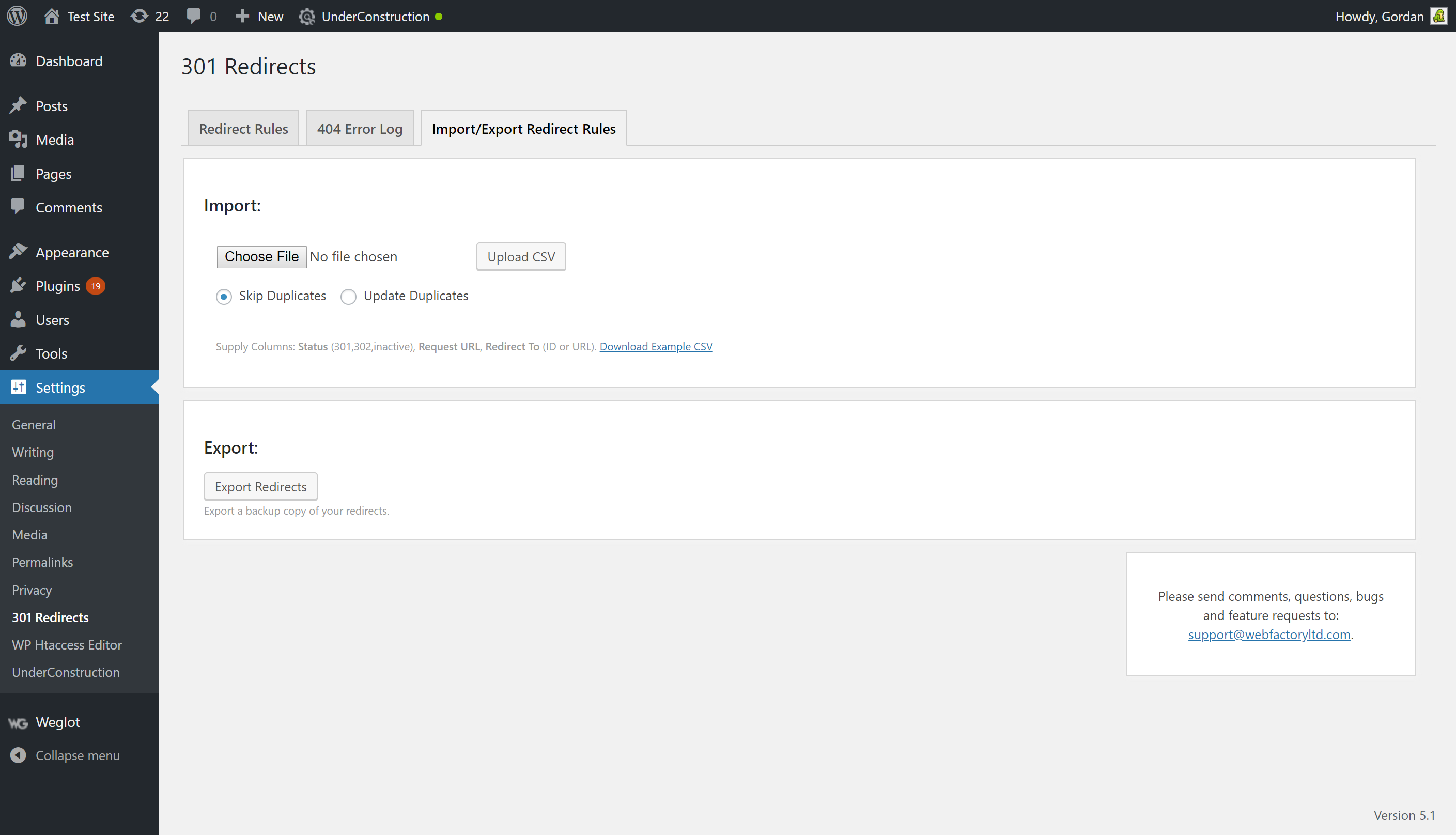A 301 redirect in WordPress permanently redirects one URL to another. It helps maintain website traffic and SEO rankings.
A 301 redirect is essential for managing changes in website URLs. It ensures that visitors and search engines are directed to the correct page, preserving link equity. This type of redirect is particularly useful when you move a page, change domain names, or restructure your site.
Implementing a 301 redirect in WordPress is straightforward with plugins like Redirection or by editing the. htaccess file. Proper usage of 301 redirects improves user experience and ensures that your site retains its search engine rankings, which is crucial for maintaining online visibility and traffic.

Credit: www.wpbeginner.com
Introduction To 301 Redirects
A 301 redirect is a way to tell your browser that a page has moved. It sends users to a new URL. The new URL is the correct one. This is a permanent move.
SEO benefits from 301 redirects. Old links point to the new page. This keeps link juice intact. Users find the right page. This improves user experience. Search engines update their index. This helps your site’s ranking.

Credit: wordpress.org
How 301 Redirects Work
HTTP status codes tell the browser what happened. A 301 redirect is a status code. It tells the browser to go to a new URL. The new URL replaces the old one. This happens automatically.
A 301 redirect is a permanent redirect. The old URL will not be used again. Search engines update their links to the new URL. A 302 redirect is a temporary redirect. The old URL may be used again. Search engines do not update their links.
Benefits Of Using 301 Redirects
A 301 redirect helps keep your SEO rankings. It tells search engines that a page has moved forever. This way, your link juice passes to the new page. Your old page’s authority remains. Search engines won’t see the new page as brand-new. This helps maintain your site’s search engine position.
A 301 redirect improves user experience. Visitors won’t land on a broken page. They are taken to the new page right away. This keeps them happy. They will stay longer on your site. This reduces your bounce rate. Happy users mean more return visits. It shows that your site is reliable.
Common Scenarios For 301 Redirects
Changing URLs can confuse visitors. A 301 redirect helps to keep things clear. It sends users to the new URL. This keeps your site traffic steady. It also helps with search engine rankings. Old links will not be broken. New content can be found easily. This makes for a better user experience.
Merging content can be tricky. A 301 redirect can help. It points old content to the new page. This helps users find what they need. It also makes sure search engines see the change. No link juice is lost. The new page gets all the benefits. This keeps your site strong.
Setting Up 301 Redirects In WordPress
A 301 redirect in WordPress permanently directs visitors from one URL to another, enhancing SEO and user experience. Setting up these redirects prevents broken links and maintains website traffic.
Using Plugins
Many WordPress plugins help create 301 redirects easily. Plugins like Redirection are popular. They offer a user-friendly interface. Simply install and activate the plugin. Then, enter the old and new URLs. The plugin handles the rest. This method is simple and effective. You don’t need coding skills. It saves time and effort. Plugins also provide error logs. This helps track any broken links.
Manual Method
The manual method requires editing the .htaccess file. This file is in the root directory of your WordPress site. Open the file using an FTP client. Add a line like this: Redirect 301 /old-page/ /new-page/. Save and upload the file. This method is more technical. You should back up your site first. Any mistake can cause issues. Only use this method if you are comfortable with code.
Popular WordPress Plugins For 301 Redirects
The Redirection plugin is easy to use. It helps you manage 301 redirects. You can set up automatic redirects with it. This plugin is free. It also keeps track of 404 errors. You can add new redirects easily. It shows a list of all your redirects. You can edit or delete them quickly.
Yoast SEO is a powerful tool. It helps with 301 redirects. You can create redirects easily. This plugin is not free. It comes with many other features. These features help improve your site’s SEO. Many people use Yoast SEO. It is very popular. It also helps with XML sitemaps and meta tags.
Best Practices For Implementing 301 Redirects
Redirect chains slow down your site. Each redirect adds load time. Always redirect directly to the final URL. This method is more efficient. It also improves SEO performance. Use tools to check for chains. Fix them as soon as possible. Never let chains build up.
Regularly check your redirects. Make sure they are still needed. Remove any that are outdated. This keeps your site clean. It also improves user experience. Use plugins to help with this task. Updating redirects is crucial for good SEO. Your site will perform better.

Credit: en-gb.wordpress.org
Frequently Asked Questions
What Is The Purpose Of A 301 Redirect?
A 301 redirect permanently moves a webpage to a new URL. It helps maintain SEO rankings and improves user experience.
How Do I Fix 301 Error In WordPress?
To fix a 301 error in WordPress, update the URL in your. htaccess file or use a redirection plugin. Ensure the new URL is correct.
Should You Remove 301 Redirects?
Generally, you should not remove 301 redirects. They help maintain SEO value and ensure a smooth user experience.
What Is An Example Of A 301 Redirect Page?
A 301 redirect example is redirecting “http://oldsite. com/page” to “http://newsite. com/page”. This tells search engines the page has permanently moved.
Conclusion
Understanding 301 redirects in WordPress is essential for managing your website’s SEO. They help maintain link equity and improve user experience. Implementing them correctly can prevent broken links and preserve search rankings. Use plugins or manual methods to set them up easily.
Keep your site optimized and user-friendly with 301 redirects.